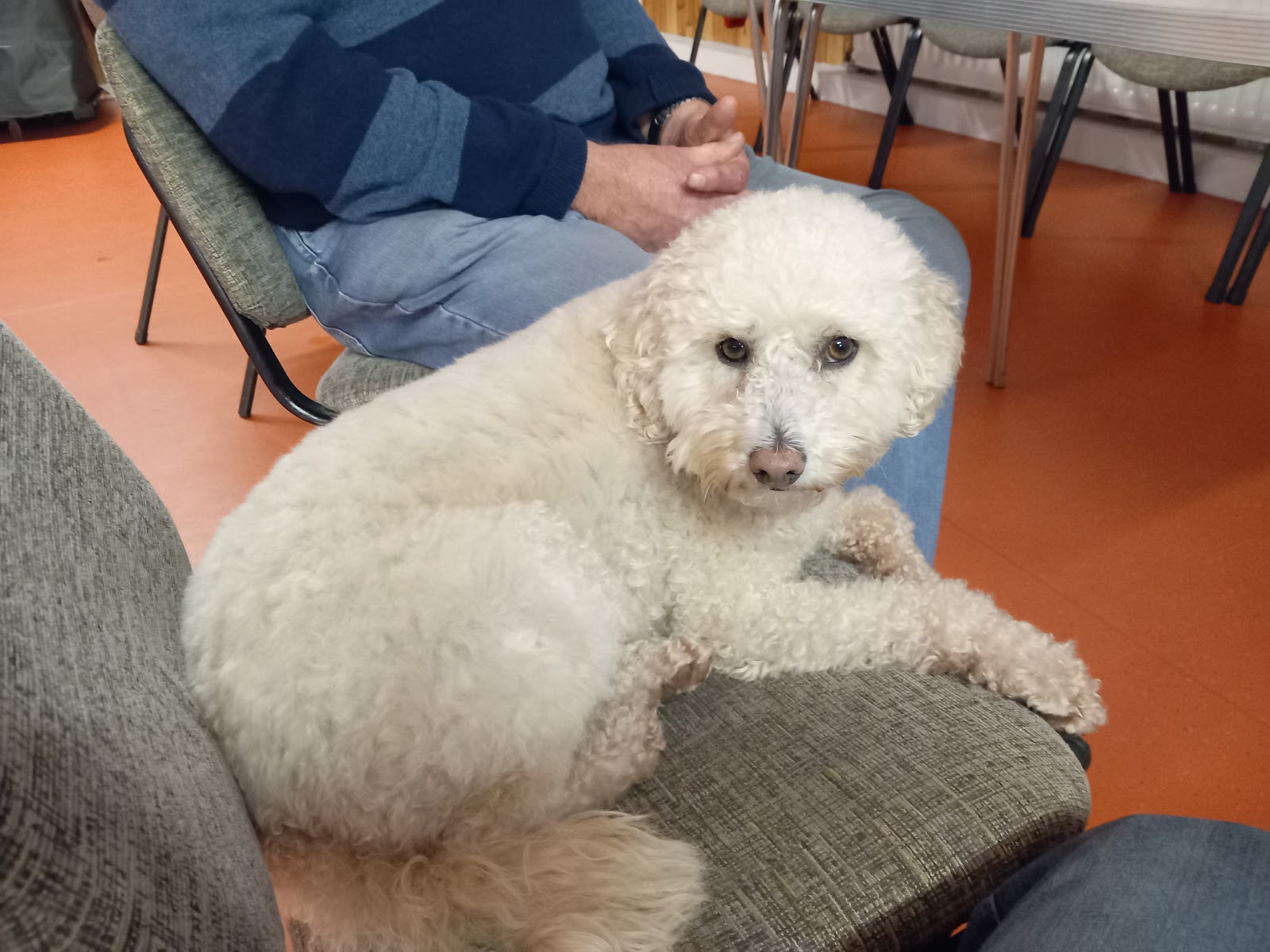Yes, it's only the 27th September, but we got the October meeting in early! This afternoon, 18 members came to see a very informative presentation by Nick Mitchell on his watchmaker's lathe and how he uses it for 2mm work. He included topics such as where to get things, how he sharpens tools, and workholding with collets.
Nick managed to set up his lathe with live video camera so that we could see what he was doing on the screen. The only downside to this setup was that he couldn't see what he was doing himself, as the camera was in the way.
Nevertheless, he demonstrated consummate skill by creating a bogie pivot for a Nigel Hunt locomotive in front of our very eyes.
The workpiece looked nice and big on the screen, so (as often with 2mm modelling) its diminutive size came as quite a shock when the finished item was passed around afterwards for approval. We should have known from the fact that it houses a 14BA bolt and contains a captive nut – a Farish coupling spring fits around the outside. And the fact that Nick showed us his initial dimensioned drawing!
As always, it was very interesting to see how an expert does things. There was a fair bit of discussion from the audience, making it clear that there is more than one way to go about things. A good time seemed to be had by all.

























